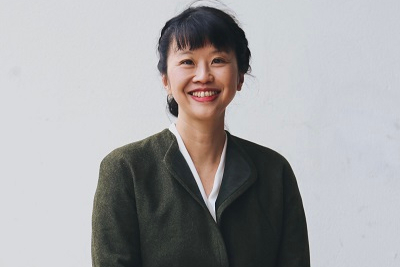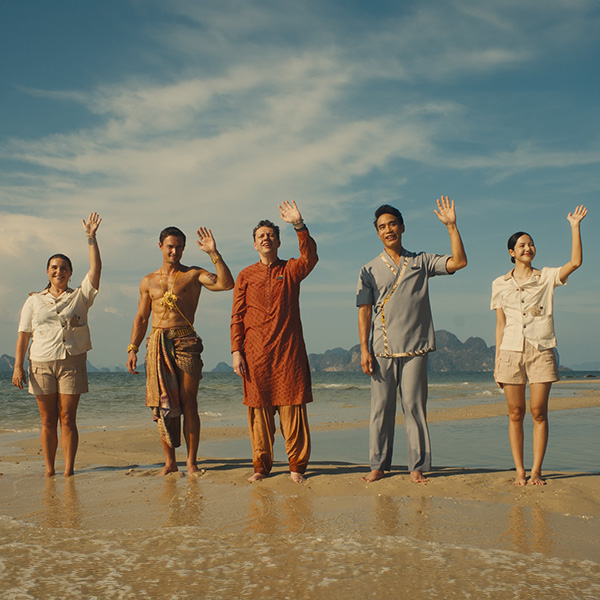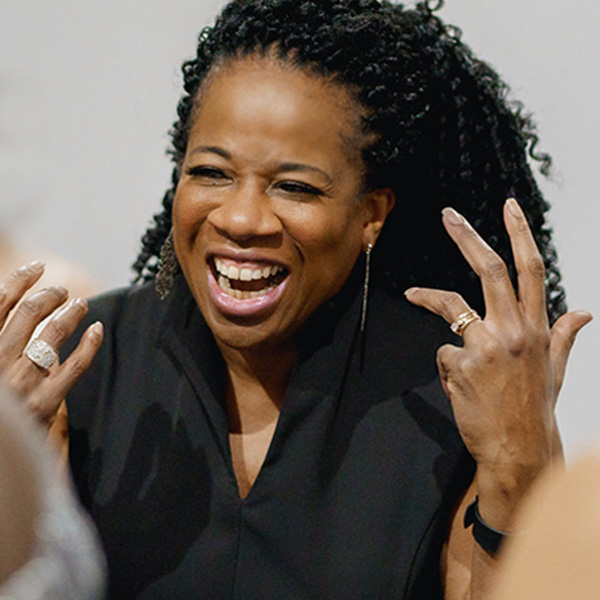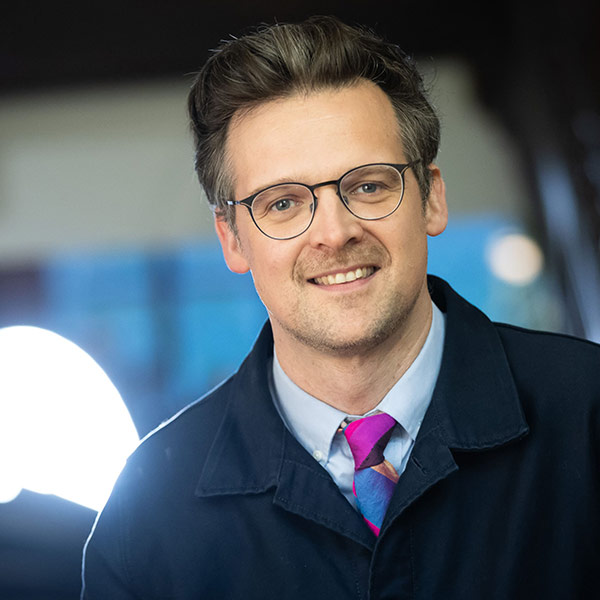For Melissa Karmen Lee, BA’03, Vancouver’s Chinatown has always been an important place. Born and raised in Vancouver, she has fond memories of accompanying her grandmother to buy groceries in the bustling neighbourhood and of attending the Chinese New Year Chinatown Parade with her father.
This year, she was proud to bring her own family to the parade. In fact, she was a participant, marching behind the banner of the Chinese Canadian Museum as the institution’s inaugural CEO.
“I feel so proud to be able to contribute to our cultural heritage,” says Lee, who spent most of the last two decades studying and working abroad. “It’s great to be able to come back with my kids and build a cultural institution in my own hometown.”
Since Lee took on the role last October, she has been constantly on the go. Our interview takes place while she is driving to her next meeting.

“We’re a start-up museum, so that means as CEO I do everything from taking the premier on a tour in the morning, to receiving chairs and getting the painters to clean out the storage area in the afternoon, [to] taking a donor out for dinner in the evening,” says Lee. “Sometimes I’m running home to tuck in my children before attending an event at night. I have a five-year-old and an eight-year-old, so I structure my time so I can do what the museum needs, but also be present for my family.”
The Chinese Canadian Museum, which currently hosts temporary exhibitions and events across Vancouver and Victoria, is set to open at its permanent home in the Wing Sang Building – the oldest building in Vancouver’s Chinatown. It will occupy all three floors of the Victorian building, with space for temporary exhibitions, restored period rooms, and an area for educational programming.
“We’ll have a period phone [that] visitors will be able to pick up and hear recordings of voices from the time, and a phonograph where they’ll be able to play records,” Lee says of the period room, which will allow visitors to experience how the building’s original occupants, the Yip family, lived. “These elements are important, because the more interactive and tactile the experience, the more fun and immersive it is for the museum goer.”
The museum’s opening day, July 1, 2023, falls exactly 100 years after the “Chinese Exclusion Act,” legislation which blocked people of Chinese origin from entering the country, was enacted.
“Opening the first Chinese museum in Canada on that date is a historic moment for us in the Chinese community,” says Lee. “And it’s also a critical time because due to the global pandemic there has been an increase in anti-Asian racism.”
To commemorate this history, the museum will host an exhibition about the experiences of Chinese-Canadians living in Canada when the Exclusion Act was passed.
The exhibition’s curator spent three years gathering identity certificates which all Chinese-Canadians had to obtain to prove that they were in the country legally. “There are some from Newfoundland, which was not even part of Canada at the time but enacted their own exclusion,” Lee says.
Lee’s vision is to create a space where all Canadians can not only learn about the history and culture of Chinese-Canadians, but also reflect on “what it means to be Canadian,” she says.
“I want it to appeal to younger people and to families. And it is not just about forgotten history, but also contemporary Chinese-Canadian culture: What are young Chinese-Canadian artists and designers doing, and how have they influenced the culture of Canada?”
Helping steer the museum’s programming is only part of Lee’s mandate. “Being a CEO, one has to be visionary and creative, but also practical and pragmatic and a lot of that is making sure that the museum is viable,” she says.
Lee has her fingers in every piece of the pie, from financial forecasting to staffing and donor relations.
According to Lee, her speciality is “museum start-ups.”
She first started working with museums while pursuing her master’s degree in English literature at the University of Canterbury in New Zealand, where she shared an office with an art history student who brought her to shows. Lee started writing art reviews on the side and moved on to curating shows for the university’s gallery.
“I think the best way to become a curator is by being friends with artists and going to a lot of exhibitions,” she says. “You’re kind of educating yourself… and then you begin to form your own ideas about what makes a good exhibition.”
When Lee moved to Hong Kong to teach Chinese-Canadian literature at the Chinese University of Hong Kong, Chinese artists were becoming prominent in contemporary art. She immersed herself in the flowering arts scene and started curating shows.
While in Hong Kong, she was invited to join the founding team of Tai Kwun, a US$50 million project to revitalize historic buildings in the city’s centre and to create spaces where the region’s history and contemporary art could be showcased.
As Tai Kwun’s curator of education and public programmes, Lee played a key role in helping the centre get off to a good start. Tai Kwun welcomed three million visitors in its first year.
After 12 years in Hong Kong, where Lee started her family, she came back to Vancouver to work as the director of education for the Vancouver Art Gallery (VAG). She took on the role just as the pandemic struck.
“At the time the VAG had no digital program at all,” she says. “Building something from scratch was something I really thrived on.”
Her next stop was the Chinese Canadian Museum. “I’m really happy all the travelling I’ve done has led me full circle back to doing something for my community,” she says.
Lee first left home to study at McGill. “For me going to school in Montreal was a real coming of age,” she reminisces. “When I chose to study English literature and history at McGill, I didn’t know what my career path could be.”
Her advice to students today? Keep an open mind and pay attention to the things that give you pleasure.
“Explore unconventional career paths, and don’t be dismissive of hobbies,” she says. “That thing you do for fun in your spare time could end up being your main career.”


